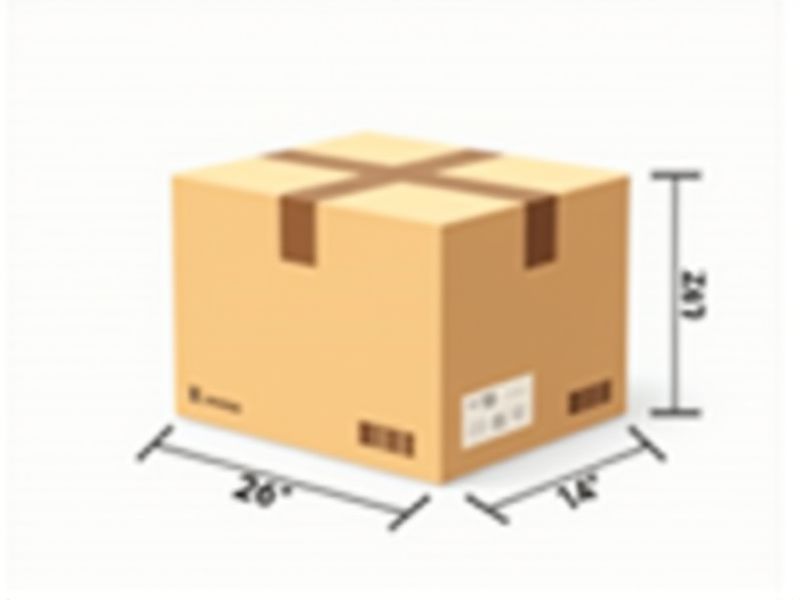
When selecting a shipping box, it's essential to choose standard sizes to optimize shipping costs and ensure compatibility with carriers. Common standard dimensions for shipping boxes include 12"x9"x6", 14"x10"x6", and 16"x12"x8". These sizes are widely accepted by carriers like USPS, FedEx, and UPS, and can accommodate a variety of products while minimizing wasted space. By using standard box sizes, you can streamline your packaging process, reduce material waste, and potentially save on shipping expenses.
International Shipping Regulations
Shipping boxes for international transport must adhere to specific standards outlined by the International Organization for Standardization (ISO), particularly ISO 3394, which sets guidelines for box dimensions and construction. These boxes should typically be made from corrugated cardboard with a minimum burst strength of 32 ECT (Edge Crush Test) to ensure protection against varying climates and handling conditions during transit. It is crucial to include appropriate labeling and documentation, such as customs declarations, to facilitate smoother customs clearance and avoid delays. Compliance with the International Maritime Organization (IMO) regulations further mandates that shipping materials meet environmental standards, safeguarding both the product and the planet.
Cost Efficiency
Cost efficiency in shipping boxes hinges on several key factors, including material choice, design optimization, and bulk purchasing. By opting for corrugated cardboard, which accounts for approximately 75% of all shipping boxes, you can reduce your per-unit cost while ensuring durability. Implementing flat-pack designs can also save space and lower shipping costs by maximizing container utilization, with studies indicating up to 30% more efficiency in transport. When buying in bulk, companies often secure discounts, making it feasible to lower overall shipping expenses while maintaining quality.
Packaging Material Compatibility
Shipping boxes must be constructed from materials that are compatible with their contents to ensure safety and security during transit. For example, corrugated cardboard is widely used for its strength, light weight, and recyclability, making it ideal for various products. Proper cushioning materials, such as biodegradable foam and recycled paper, can further enhance protection, reducing the risk of damage by up to 70%. When selecting packaging, consider moisture resistance and the potential for temperature fluctuations to maintain integrity and ensure your items arrive in optimal condition.
Loading Efficiency
The standard shipping box is optimized for loading efficiency, with dimensions often measuring 18 x 12 x 12 inches, designed to maximize space utilization in transport vehicles. By employing durable materials such as corrugated cardboard, it can safely carry weights up to 65 pounds while minimizing the risk of damage during transit. You can enhance load capacity by stacking boxes to a height of 5-6 tiers, depending on the weight distribution. Implementing effective packing techniques ensures that shipments are not only efficient but also reduce overall shipping costs by maximizing the load per delivery.
Transportation Mode Requirements
Shipping boxes must comply with specific Transportation mode requirements to ensure safety and efficiency in logistics. For air transport, lightweight materials like corrugated cardboard are preferred, with weight limits often capping at 150 lbs per box. In contrast, international sea shipments necessitate sturdier packaging, frequently incorporating wood or reinforced materials, as they face harsher conditions. Complying with the International Air Transport Association (IATA) guidelines can prevent costly delays or damages, emphasizing the importance of selecting the right packaging for your shipping needs.
Storage Space Optimization
A standard shipping box typically measures around 12 x 12 x 12 inches, providing an ideal volume of 1,728 cubic inches for compact storage. Optimizing the storage space involves utilizing corrugated cardboard materials that offer lightweight yet strong protection, which can significantly reduce shipping costs by allowing more boxes per shipment. When arranging boxes within a larger shipping container, consider stacking them to enhance vertical space utilization, preventing wasted air gaps that could accrue additional shipping fees. With proper organization, effectively designed shipping boxes can lead to a 30% increase in storage efficiency, allowing you to maximize your inventory management and logistics.
Handling Ease
A shipping box designed for handling ease typically measures 12x12x12 inches, offering a compact yet spacious interior for various products. Constructed from double-walled corrugated cardboard, it provides enhanced durability while keeping the weight manageable at around 1.5 pounds. Features such as reinforced corners and easy-grip handles can improve lifting efficiency, reducing the risk of injury during transport. By focusing on these aspects, the standard shipping box not only simplifies the shipping process but also ensures that your goods arrive safely and intact.
Product Safety And Protection
Shipping boxes must adhere to stringent standards to ensure product safety and protection during transit. Typically constructed from corrugated cardboard, these boxes provide a robust structure that can withstand impacts, moisture, and temperature fluctuations. The use of protective insert materials, such as bubble wrap or foam, can decrease the risk of product damage, especially for fragile items. Companies should aim for boxes that meet industry-specific regulations, with dimensions tailored to minimize movement and maximize cushioning for optimal protection.
Environmental Impact
Shipping boxes designed with a focus on environmental impact often utilize materials such as recycled cardboard, which can reduce landfill waste by up to 70%. These eco-friendly packaging solutions often emphasize minimalistic designs that use less ink and fewer adhesive types, further decreasing their carbon footprint. Statistics indicate that companies utilizing sustainable packaging can decrease their overall environmental impact by approximately 30%, contributing significantly to global efforts against climate change. By choosing shipping boxes that prioritize sustainability, you can help foster a responsible shipping ecosystem that benefits both businesses and the planet.
Brand And Presentation Consistency
When designing shipping boxes, maintaining brand and presentation consistency is crucial; 70% of consumers say that packaging influences their purchasing decisions. Custom-branded boxes that reflect your logo, color scheme, and typography not only enhance brand recognition but also create a cohesive unboxing experience. A survey indicated that 60% of customers are more likely to recommend a brand with aesthetically pleasing packaging. Investing in high-quality materials and designs can increase customer retention by up to 50%, making it essential for your brand identity.
